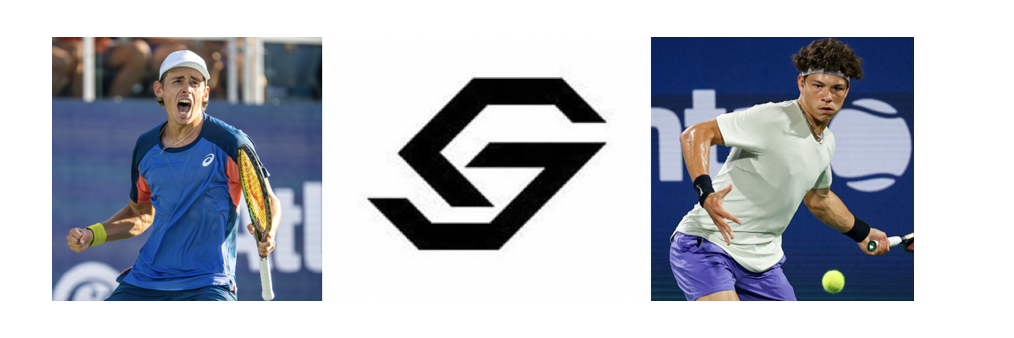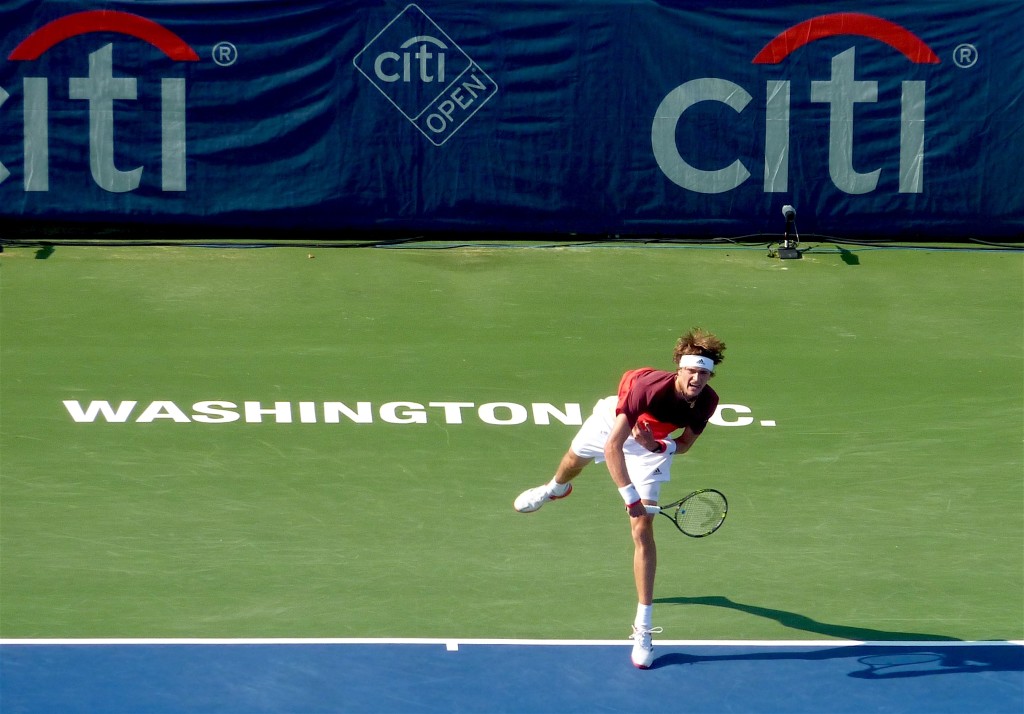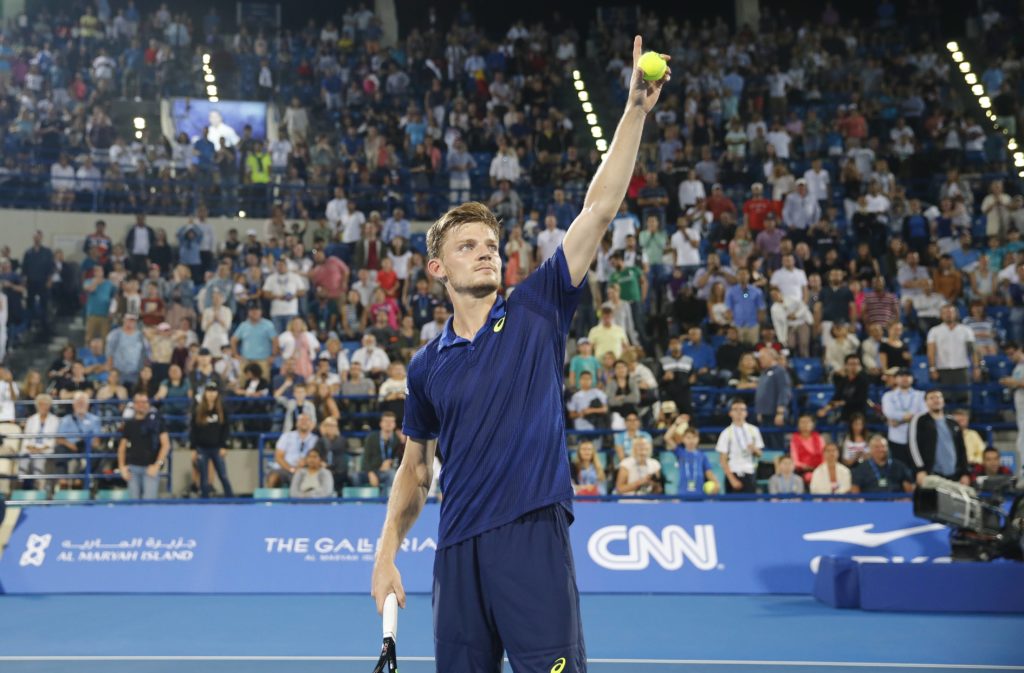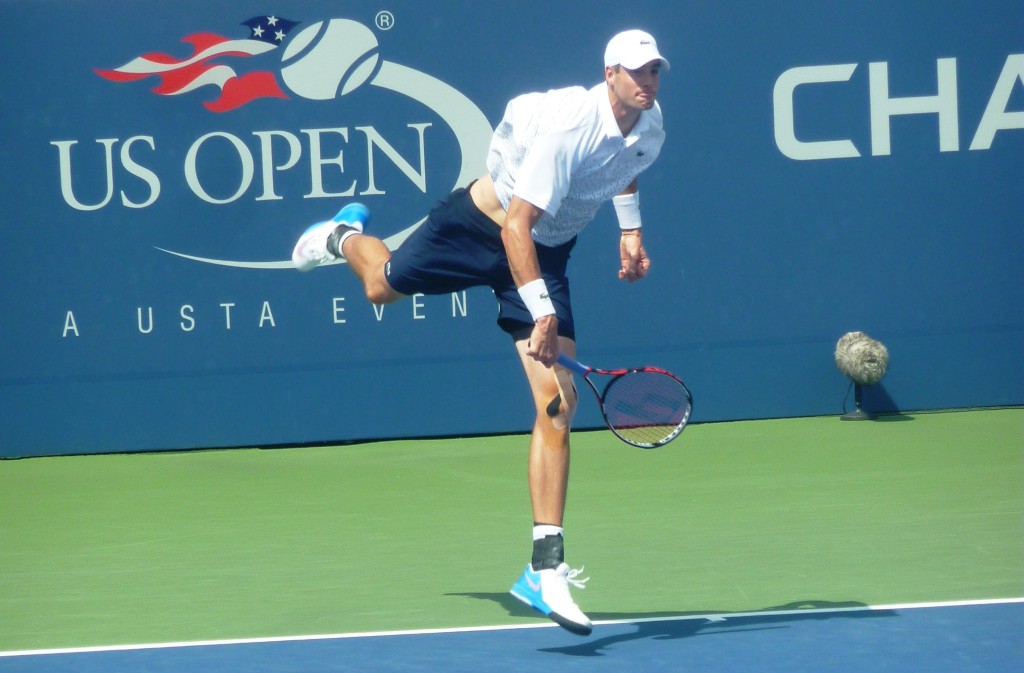
There is always that one match on which players–and fans–can look back and think how different things might have been had it gone the other way. Some cases, of course, are more extreme than others. But for all of the World Tour Finals qualifiers, and for those who missed out, let’s take a look at the matches that decided their year-end championship fate.
1. Rafael Nadal
Madrid Masters SF: Nadal vs. Novak Djokovic 6-2, 6-4
Heading into Madrid, Nadal was already in the midst of a solid season with runner-up performances at the Australian Open, in Acapulco, and in Miami plus titles in Monte-Carlo and Barcelona. From a ranking points perspective, a loss to Djokovic in the Madrid semifinals would not have been a huge deal. But from a mental standpoint, it could have been crippling. Nadal went into the showdown on a horrific seven-match losing streak against Djokovic. Finally, though, the demons were erased. The Spaniard won the match, captured the title, dominated basically the entire clay-court swing, and never looked back in 2017.
2. Roger Federer
Australian Open F: Federer d. Nadal 6-4, 3-6, 6-1, 3-6, 6-3
In terms of win-loss percentage, Federer has been the best player from start to finish this season. Like Nadal, he was never not going to qualify for the World Tour Finals. But the Swiss eliminated even the most remote of possibilities that 2017 would be a down year for him when he captured the first Grand Slam title of the season in Melbourne. After surviving five-setters earlier in the tournament against Kei Nishikori and Stan Wawrinka, Federer had his back against the wall in the final after dropping the fourth set and trailing by a break in the fifth. But he stormed back to beat Nadal and was thus off to the races.
3. Alexander Zverev
Rome Masters F: Zverev d. Novak Djokovic 6-4, 6-3
Zverev already had a pair of 250-point titles at the time, but back-to-back losses at the hands of Nick Kyrgios in Indian Wells and Miami plus some bad draws (Nadal in the third round of the Australian Open and Monte-Carlo) halted the 20-year-old’s progress. Halted no more. Zverev captured his first career Masters 1000 title by upsetting Djokovic in the Rome final, and from there he took off. The German’s hard-court summer included back-to-back wins in Washington, D.C. (500) and Montreal (another 1000). He underwhelmed at slams, but that pain was eased by his two Masters 1000 triumphs.
4. Dominic Thiem
Barcelona SF: Thiem d. Andy Murray 6-2, 3-6, 6-4
Predictably, Thiem was just about hopeless on hard courts during the first few months of the season (aside from a quarterfinal showing in Indian Wells) before finding his footing on clay. Barcelona kicked off a stretch in which the Austrian’s results were runner-up, runner-up (Madrid), semifinals (Rome), and semifinals (Roland Garros). Thiem outlasted Murray after two hours and 15 minutes in the Barcelona semis, giving himself a shot at Nadal in the title match. He lost that one to Nadal, but any experience against the clay-court GOAT on his playground is a productive one. Sure enough, Thiem pulled off a clay-court upset of Nadal three weeks later in Rome.
5. Marin Cilic
Wimbledon QF: Cilic vs. Gilles Muller 3-6, 7-6(6), 7-5, 5-7, 6-1
Cilic missed basically all of the hard-court summer, playing only the U.S. Open and losing in the third round there to Diego Schwartzman. But it did not matter much thanks to the impressive work Cilic put in during the short grass-court swing–semifinals of ‘s-Hertogenbosch, final of Queen’s Club, and final of Wimbledon. The Croat may have been preparing for a quarterfinal test with Nadal at the All-England Club, but instead it came in the form of Muller. Cilic just barely passed it after three hours and 30 minutes before going on to topple Sam Querrey in the semis.
6. Grigor Dimitrov
Cincinnati Masters F: Dimitrov d. Nick Kyrgios 6-3, 7-5
Two tournaments stand out for Dimitrov: the Australian Open (semifinals) and Cincinnati Masters (title). The Bulgarian benefited from a favorable draw in Melbourne as part of Djokovic’s section (Djokovic lost to Denis Istomin the round two and Dimitrov beat Istomin four days later), but his Cincinnati run was especially impressive. It included wins over Juan Martin Del Potro, John Isner (during Isner’s favorite time of year), and Kyrgios. Dimitrov’s stellar display against Kyrgios in the final propelled him to the most significant title of his career to date.
7. David Goffin
Tokyo R2: Goffin d. Matthew Ebden 2-6, 7-5, 7-6(1)
This is by far the most obscure match on this list, but it did not lack in year-end championship importance. While many other contenders floundered this fall (most notably Carreno Busta, Querrey, and Kevin Anderson), Goffin excelled during the post-U.S. Open swing to secure his spot in London. He won two titles and reached the Basel semifinals. The most important tile came in Tokyo, where the Belgian gained 500 points after almost leaving with just 45. Goffin twice failed to serve out his second-round match against Ebden, had to serve to stay alive at 5-6 in the third, and finally prevailed in a third-set ‘breaker.
8. Jack Sock
Paris Masters R2: Sock d. Kyle Edmund 4-6, 7-6(4), 7-6(5)
You would need all 10 fingers to count the players still in mathematical World Tour Finals contention going into the Paris Masters. The majority of that group had to win the title, and that group included Sock. And that is exactly what Sock did. But the American’s miraculous run to by far the biggest title of his career almost never got off the ground. In his opening match against Edmund, Sock trailed 5-1 in the third set and also took a medical timeout (a somewhat infamous and not-suitable-for-work medical timeout) for a back issue. He somehow stormed back to beat Edmund and the rest, of course, is history.
———————————————————————-
9. Pablo Carreno Busta
China Open R1: Steve Darcis d. Carreno Busta 6-0, 6-4
Carreno Busta put himself in the London discussion with a quarterfinal run at the French Open and he moved into qualifying position with a shocking semifinal appearance at the U.S. Open. But a brutal fall slump ended his hopes, and it was touched off by his opening loss to Darcis at the 500-point event in Beijing. The Spaniard won only four total games against Darcis and never got back on track. He finished the season with a 1-6 record in his last seven matches.
10. Juan Martin Del Potro
Shanghai Masters SF: Federer d. Del Potro 6-7(5), 6-4, 6-3
The three slams other than the U.S. Open are what really hurt Del Potro. He skipped the Australian summer and did not do anything at either the French Open or Wimbledon. Still, he would have qualified for the World Tour Finals if he had upset Federer in either Shanghai or Basel. Del Potro was especially up against it in Basel, where he was playing for the fourth time in four weeks and clearly running low on energy. It was in the Shanghai semifinals where he really had his chance. But Federer recovered from a set deficit to get the job done and he eventually cruised past Nadal in the final–a match that obviously would have been winnable for Del Potro.
11. Sam Querrey
U.S. Open QF: Kevin Anderson d. Querrey 7-6(5), 6-7(9), 6-3, 7-6(7)
Querrey is about as stoic as they come but if any loss has ever hurt him, this one had to. Playing at his home slam, the 6’6” American had already capitalized on a favorable draw and only Anderson and Carreno Busta (would have been his semifinal opponent) stood in his way of a major final. Querrey had plenty of chances in the quarters but eventually lost a four-set thriller to Anderson after three hours and 27 minutes. Having previously reached the last four at Wimbledon, back-to-back slam semifinal performances would have sent Querrey well on his way to London.
12. Kevin Anderson
Wimbledon R4: Querrey d. Anderson 5-7, 7-6(5), 6-3, 6-7(11), 6-3
Yes, Querrey and Anderson basically eliminated each other by trading a pair of five-set battles in the last two majors of the year. Had either man gone 2-0 in those showdowns, he would have sailed to the O2 Arena with little trouble. But before Anderson got the best of Querrey in New York, the 6’8” South African succumbed after three hours and seven minutes in the Wimbledon fourth round. Had Anderson won, an injured Murray would have awaited him in the quarters.
13. Jo-Wilfried Tsonga
French Open R1: Renzo Olivo d. Tsonga 7-5, 6-4, 6-7(6), 6-4
After reaching the quarterfinals of the Australian Open, Tsonga was a disaster at slams (first round of the French Open, third round of Wimbledon, second round of the U.S. Open). And although the Frenchman is not at his best on clay, he is a two-time Roland Garros semifinalist (2013, 2015) and could have done plenty of damage once again with Nadal, Djokovic, and Thiem all on the other side of the draw. Instead, Tsonga lost right off the bat to Olivo of all opponents.
14. John Isner
U.S. Open R3: Mischa Zverev d. Isner 6-4, 6-3, 7-6(5)
Speaking of being a disaster at slams, Isner has been just that throughout his otherwise solid career and this year was no exception. It was all set up for him to break through at the U.S. Open, where the bottom half of the draw was positively wide open. As early as the third round, Isner was arguably the favorite to reach the final. Those ideas went up in smoke with a straight-set loss to Zverev (who also beat him in round two of the Australian Open and ended up making the quarters) and Isner was never in serious London contention until his recent Paris semifinal run.
15. Lucas Pouille
Australian Open R1: Alexander Bublik d. Pouille 6-0, 3-6, 6-3, 6-4
Like Isner, Pouille was never in the real London discussion until Paris, where he had to finish no worse than runner-up to have even the slightest mathematical chance. Before his season took off on clay in April, the Frenchman put himself in a significant hole with a rough first three months–plagued by back-to-back losses against Donald Young in Indian Wells and Miami. But no result was worse than a four-set loss to Bublik in the first round of the Australian Open.
[polldaddy poll=9868045]







disagreements?
Zverev vs Nadal Aus Open
Federer and Rafa Nadal are the greatest modern rivals in tennis, but they’re also great friends.
I’m personally a big fan. Did an illustration of these guys a while back.
You can check it out and download it for free if you want on the following link:
https://capturedinart.com/collections/sports-1/products/fedal3pwa
Let me know what you think 🙂
How will Roger and Rafa fare in 2018 … Announcing the power players for 2018 here. Doesn’t hurt to start with Federer, Serena and Nadal … http://www.138mph.com/tennis-predicting-the-atps-wtas-movers-and-shakers-for-2018-part-1/
The only reason that Federer is a better player today than in his mid-20s (if that is true) is because of the larger racquet. Had he switched in 2007 he would have several more GS titles.
However, there is no chance that Fed at 80% will contend for major titles in 2018. The margins are too fine at the top. At 36-37 he will need to be near his best, particularly health and fitness-wise.
There is probably a better chance that Nadal wins RG than that Fed wins any GS, and less chance that either of them win another than almost everyone thinks.
Even if Fed switched to bigger racket in 2007, he’s not going to win several more slams because he wasn’t playing well in 2008 and 2010, the racket won’t help. I don’t think the world of him during those times, because Rafa was at his peak and if not for injury, should have done better too in 2009.
Not forgetting Fed had his back issues too. From 2011 onwards, Djoko was playing at a different level from his own past and from the other top players. Fed vs Djoko slam matches were sometimes close but Djoko usually got the upper hand because Djoko played with belief like the Rafa of old.
Unless Fed went for a six months break to brush up his BH using the bigger racket during those periods, he’s not going to trouble Rafa or Djoko (he wasn’t beating Rafa at AO2012/2014 because AO back then was on slower surfaces; I doubt he could do any better at FO2011 either); Djoko himself had a solid world class DHBH so he won’t be afraid of Fed’s improved BH. It’s only on quicker surfaces that Fed got the advantage, it’s usually the case between them.
Fed might win one of those two Wimbledon encounters, I’m not sure about their USO2015 encounter either, for Djoko was known to be warrior and won’t give up so easily, even if he’s broken and chasing from behind.
We obviously disagree. I honestly think Federer would have at least 25 GS titles if he had played with the bigger racquet from the beginning, or at least from 2007. All of the non-clay slam losses to Nadal would have gone the other way, and he would probably have nabbed at least one RG title as well. Slow HC doesn’t matter; witness the wins at Miami and Indian Wells this year (ATP surface guide says they are both slow). Fed’s serve -the most important shot in tennis- is better with the larger racquet. His return is better. And from a technical standpoint (toppy FH to Fed BH), the larger racquet simply changes the whole dynamic of the Fed-Rafa rivalry.
I’ve said it before: male tennis players do not suddenly get better in their early-mid 30s, and especially not at 35, unless they are doping. I agree with you that the 6 month break helped, and the win against Rafa at AO was huge mentally, but Roger was already playing (imo) the best tennis in the world for first 8-9 months of 2015. He couldn’t produce it in the biggest slam matches against Novak, but that was mental: he was actually playing better tennis. Again, my opinion.
Please Joe, you’re talking about a 31 yo Rafa who’s still finding his feet back on track early this year!
Fed winning all non clay slams plus one FO? My foot! You conveniently forget just how good peak Rafa and peak Djoko were, not forgetting Fed had his back issues too in 2008/2009 at least.
Big racket or not, Fed wasn’t going to beat peak Rafa clay or non clay! Seeing how close the AO 2017 final was, I’m amused by what you said, about Fed winning all the non clay slams! More like in your dreams!
Just how delusional one can be, to think that his fave player would change everything with one big racket??? Why don’t you ask Fed how he feel about that huh?
Also, Joe conveniently forget that IW and Miami were BO3, you expect Rafa to lose meekly like that at the slams? Fed had never ever beaten Rafa in straight sets at the slams, even at Wimbledon!
The AO2017 final on quick surface and yet Fed had to struggle to beat Rafa despite being physically more fresh than Rafa, what more on slower high bouncing AO surfaces of the past? Just think!
Some more points to add.
Fed wasn’t winning because of his bigger racket, but because he’s more aggressive and taking the ball early on his BH side. Was he playing this way in the past? I’m afraid he’s not, so bigger racket or not he’s not going to win. Stan for eg, was playing with a bigger racket all along, had a more powerful SHBH yet he couldn’t do anything against Rafa in the past.
Rafa was more powerful in the past and was able to push Fed back behind the baseline with his CC FH, hence not allowing Fed to step inside the court to take the ball early with his BH; Fed even couldn’t move his feet quick enough to run around to hit his FH!
Fed was having the upper hand now because Rafa was hitting his shots too short these days, as he lost some of his power as he gets older, hence allowing Fed the chances to move forward to hit his BH early.
Against Delpo for eg, Fed couldn’t have such luxury because of Delpo’s powerful penetrating shots esp his I/O CC FH hit from the BH corner; Fed had to fight so hard to beat Delpo and had to go the distance almost always.